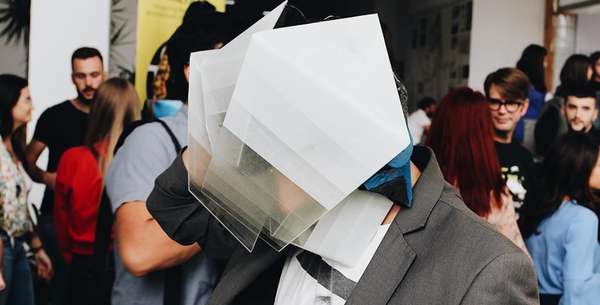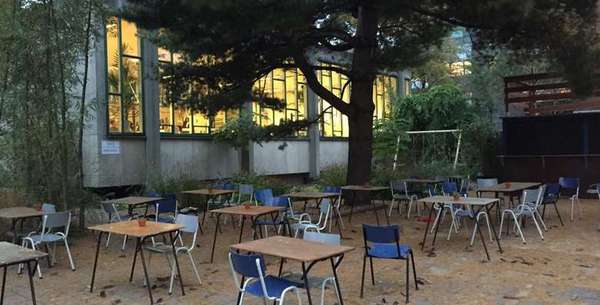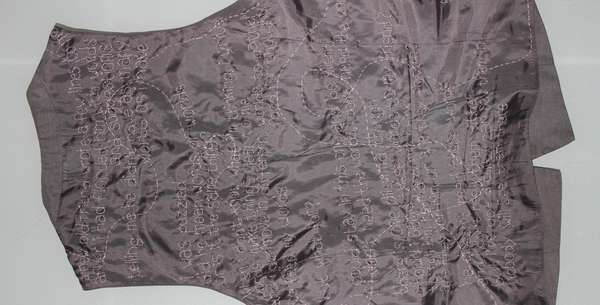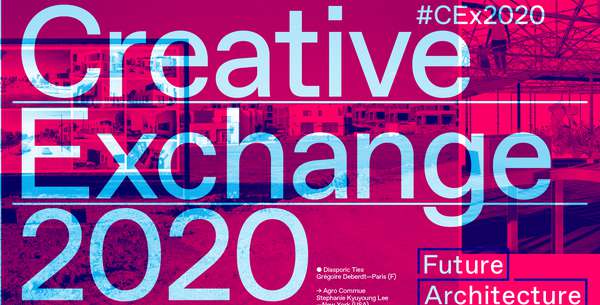Idea by
Diego Sologuren + Brad Downey
Call for ideas 2020
Manifesto for unexpected architectures
Manifesto for unexpected architectures
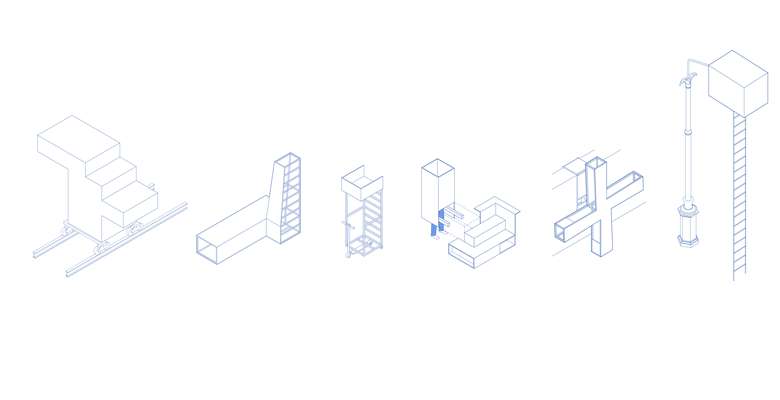
- Systemic changes
Architecture, understood as a relational and dialectical product, is a potential agent of resignification. It is an appropriate tool to exert a critical resistance towards the powers of structure, standardization and the generic city. This resistance, implemented through the awareness of the temporary, the accident, the surprise, is manifested in the form of unexpected architectures.
Unexpected architectures emerge in the contingency and provoke challenging relationships with body and space. They are temporary devices, with a transversal dimension, an imprecise function and an open meaning. They imply a radical divergence in the way the urban is experienced.
Unexpected architectures anticipate a future of minor architecture: they unveil an imaginary, where spontaneity, a-legality, dystopia, degrowth, marginality, collective intelligence and citizen empowerment can coexist.

Railway Object. An object can have two different meanings depending on the context where it belongs.
In the platform, the object serves for connection. It is an architectural piece. It has a use.
When it moves through the rails, the object becomes a sculpture, an absurd form which carries people nowhere.
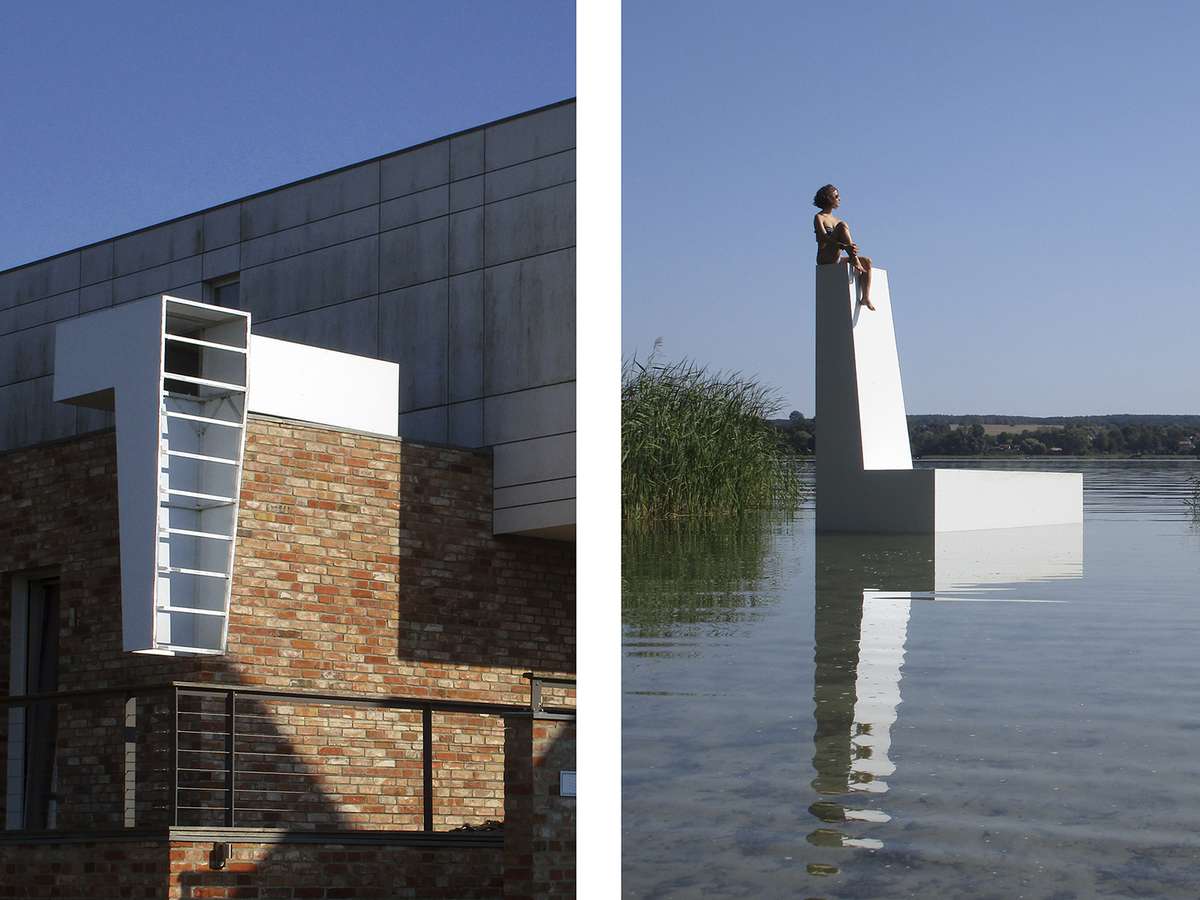
The tunnel, the ladder, the platform. L-shaped piece with a setback in joining of the two bodies that compose it. Three elements are distinguished: ladder, internal hollow and flat surfaces. Its geometry, as well as its hybrid multi-functional object condition, offer a versatility of installation, allowing different situations of use in relation to both the position and the context in which it is installed.
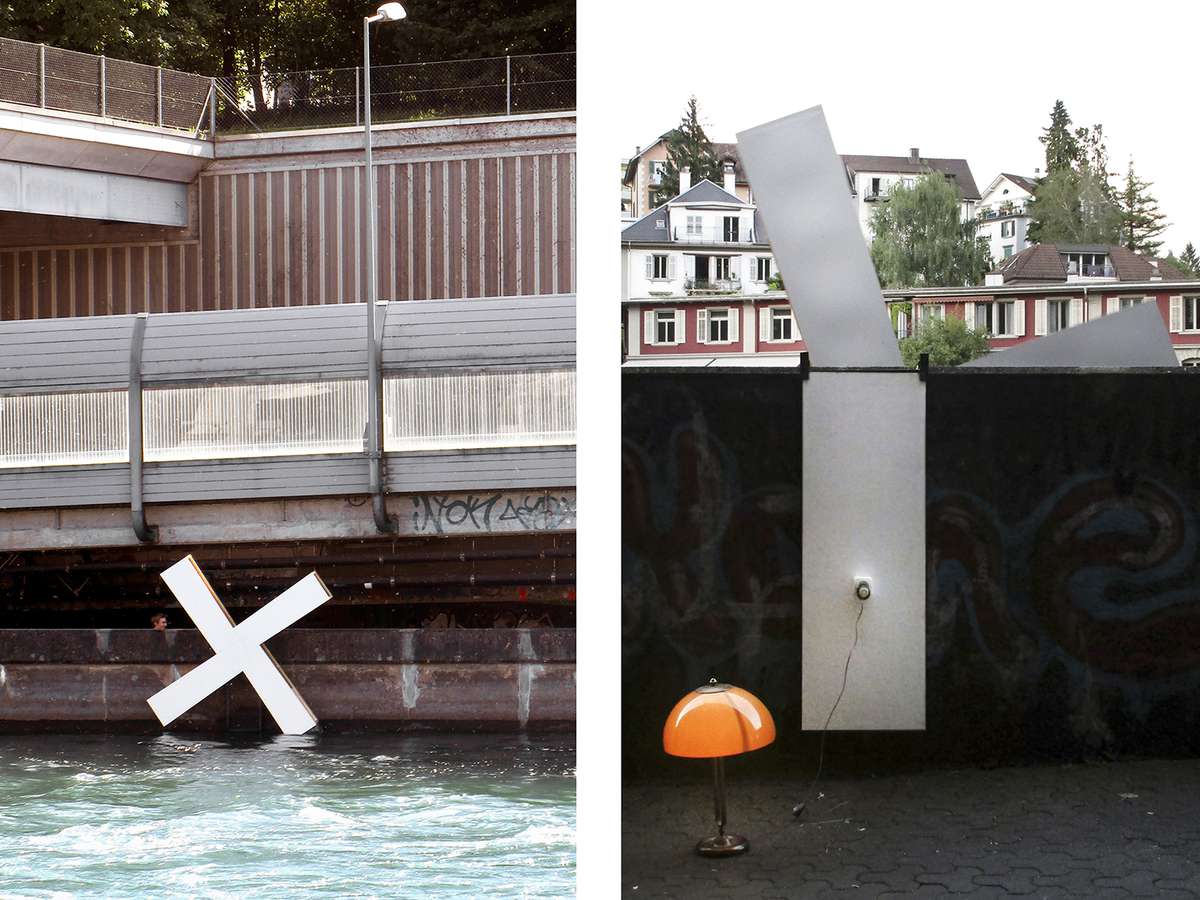
Watermill. A white cross rotates with the water, transforms the movement through an alternator into electricity and offers a power plug at the other side of the wall. The sculpture generates a minimal architectonic function, it creates, within an impersonal transit way, a punctual space for use, detention, comfort.

Lamp Parasite. A Soviet era cast iron street lamp is shaped by a parasitic white box. The box functions as a container of light. A long ladder comes all the way up to the light and enters the box through a formless hole, which allows the light and shadows to combine symbolically.
A surreal image: architecture becomes light.
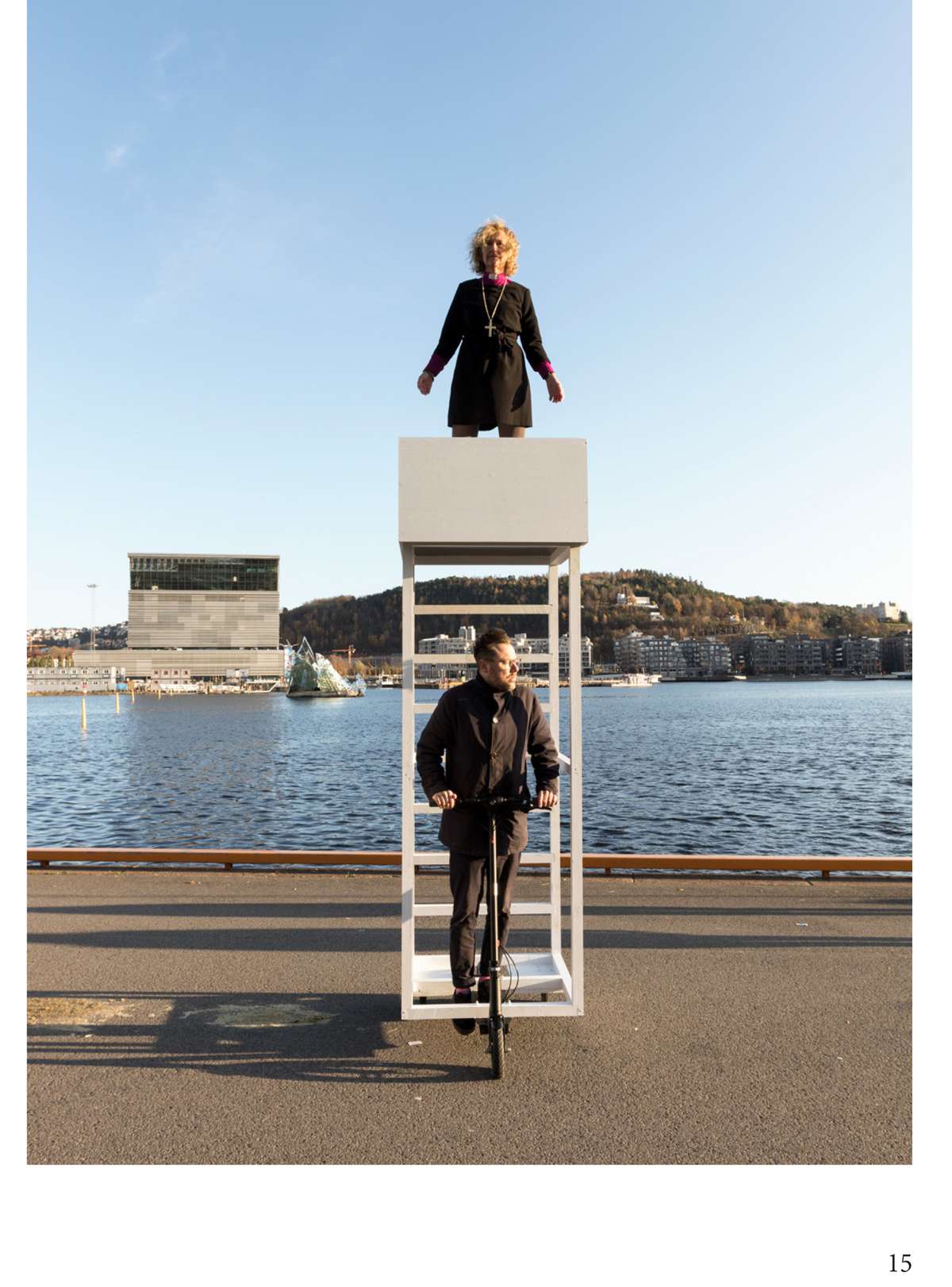
Plug-in Pulpit. Desire Lines_Photo Henrik Haven_Conceived as an artifact designed to attach to a E-scooter in the city of Oslo, the plug-in pulpit becomes a hybrid, multipurpose urban objet.
Manifesto for unexpected architectures
Manifesto for unexpected architectures

- Systemic changes
Architecture, understood as a relational and dialectical product, is a potential agent of resignification. It is an appropriate tool to exert a critical resistance towards the powers of structure, standardization and the generic city. This resistance, implemented through the awareness of the temporary, the accident, the surprise, is manifested in the form of unexpected architectures.
Unexpected architectures emerge in the contingency and provoke challenging relationships with body and space. They are temporary devices, with a transversal dimension, an imprecise function and an open meaning. They imply a radical divergence in the way the urban is experienced.
Unexpected architectures anticipate a future of minor architecture: they unveil an imaginary, where spontaneity, a-legality, dystopia, degrowth, marginality, collective intelligence and citizen empowerment can coexist.
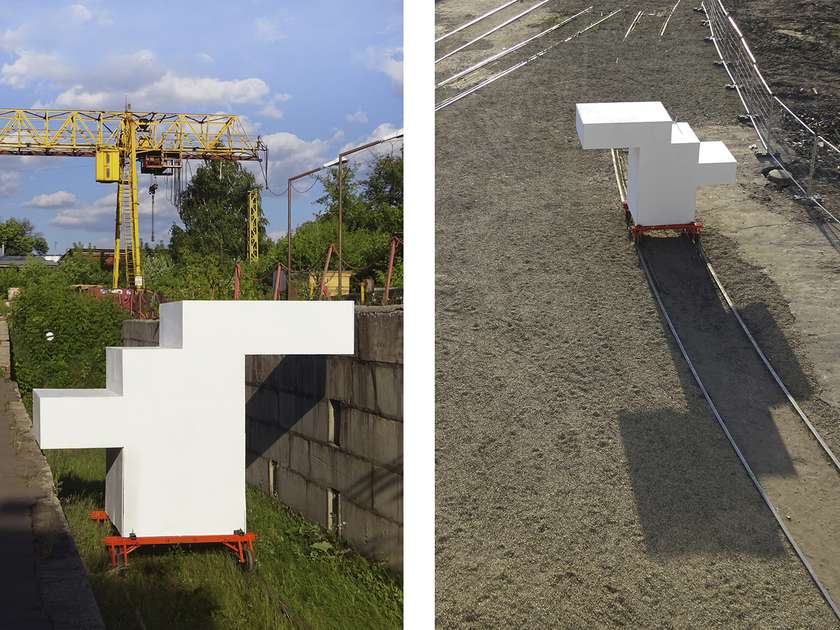
Railway Object. An object can have two different meanings depending on the context where it belongs.
In the platform, the object serves for connection. It is an architectural piece. It has a use.
When it moves through the rails, the object becomes a sculpture, an absurd form which carries people nowhere.
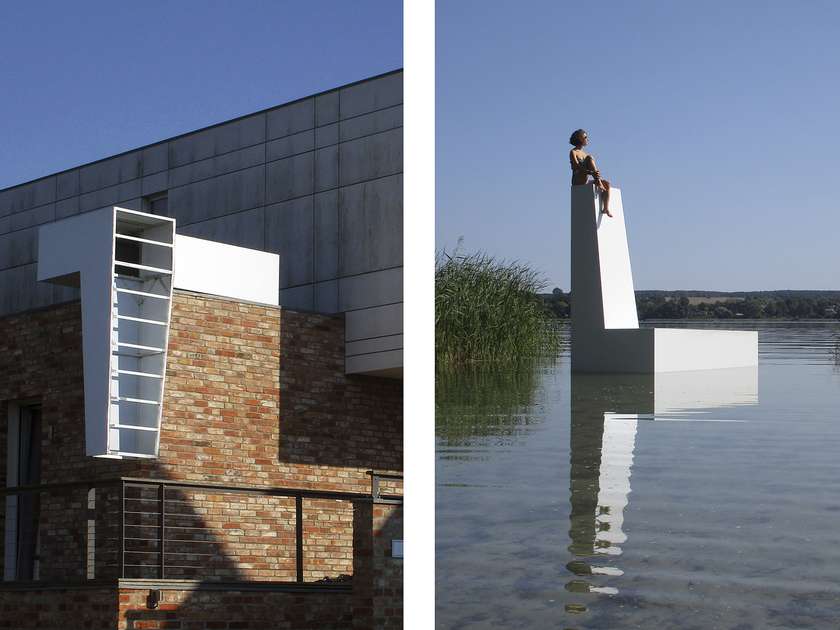
The tunnel, the ladder, the platform. L-shaped piece with a setback in joining of the two bodies that compose it. Three elements are distinguished: ladder, internal hollow and flat surfaces. Its geometry, as well as its hybrid multi-functional object condition, offer a versatility of installation, allowing different situations of use in relation to both the position and the context in which it is installed.
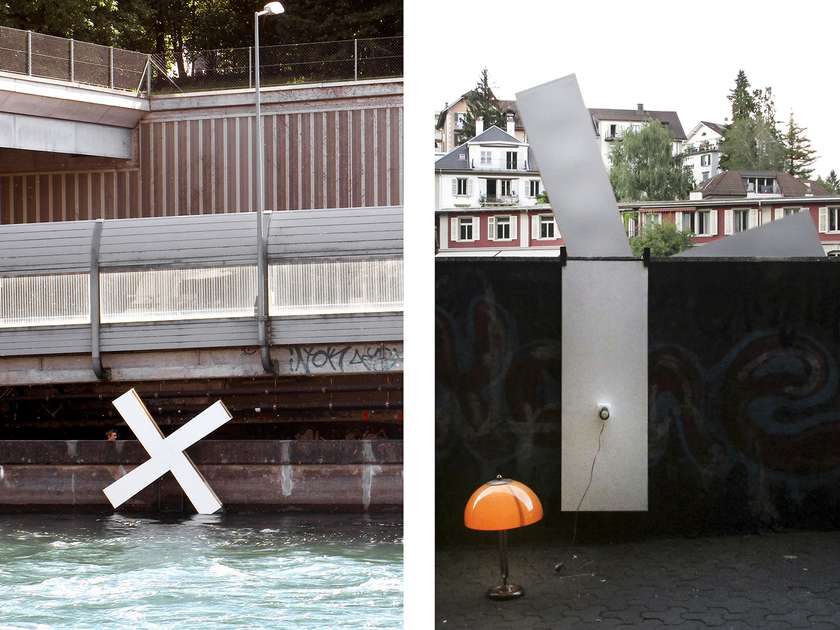
Watermill. A white cross rotates with the water, transforms the movement through an alternator into electricity and offers a power plug at the other side of the wall. The sculpture generates a minimal architectonic function, it creates, within an impersonal transit way, a punctual space for use, detention, comfort.
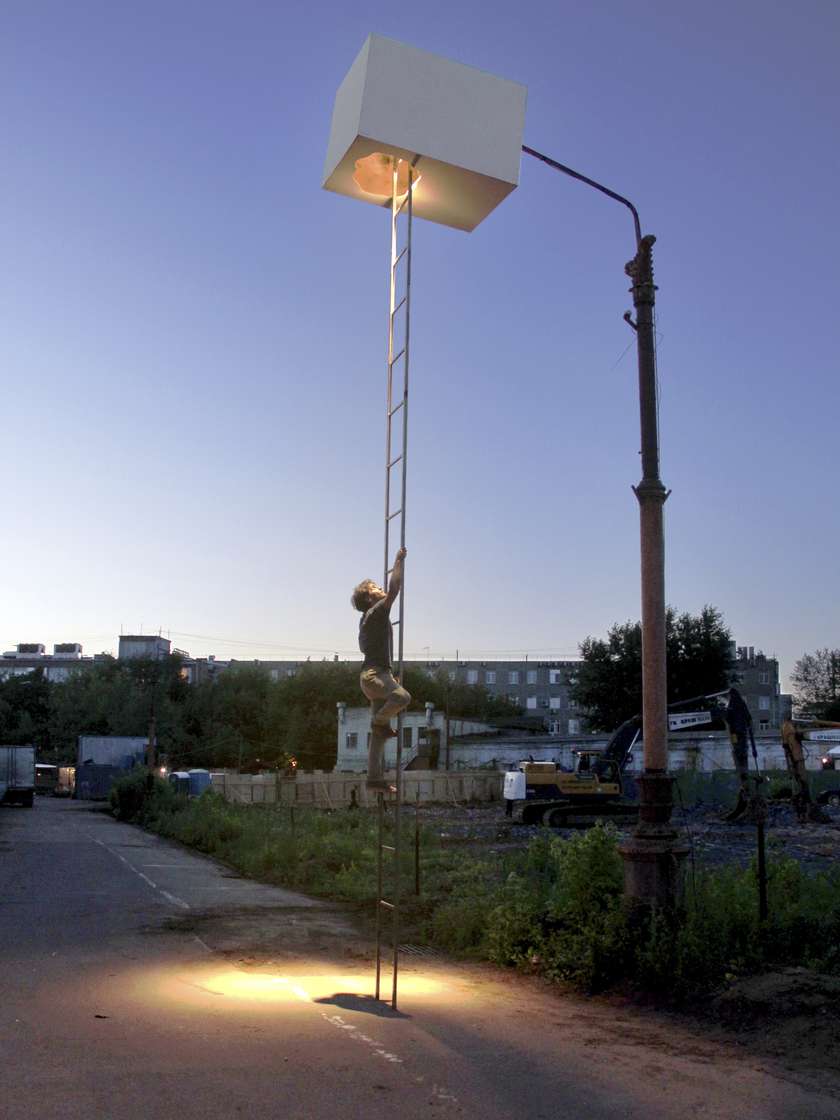
Lamp Parasite. A Soviet era cast iron street lamp is shaped by a parasitic white box. The box functions as a container of light. A long ladder comes all the way up to the light and enters the box through a formless hole, which allows the light and shadows to combine symbolically.
A surreal image: architecture becomes light.
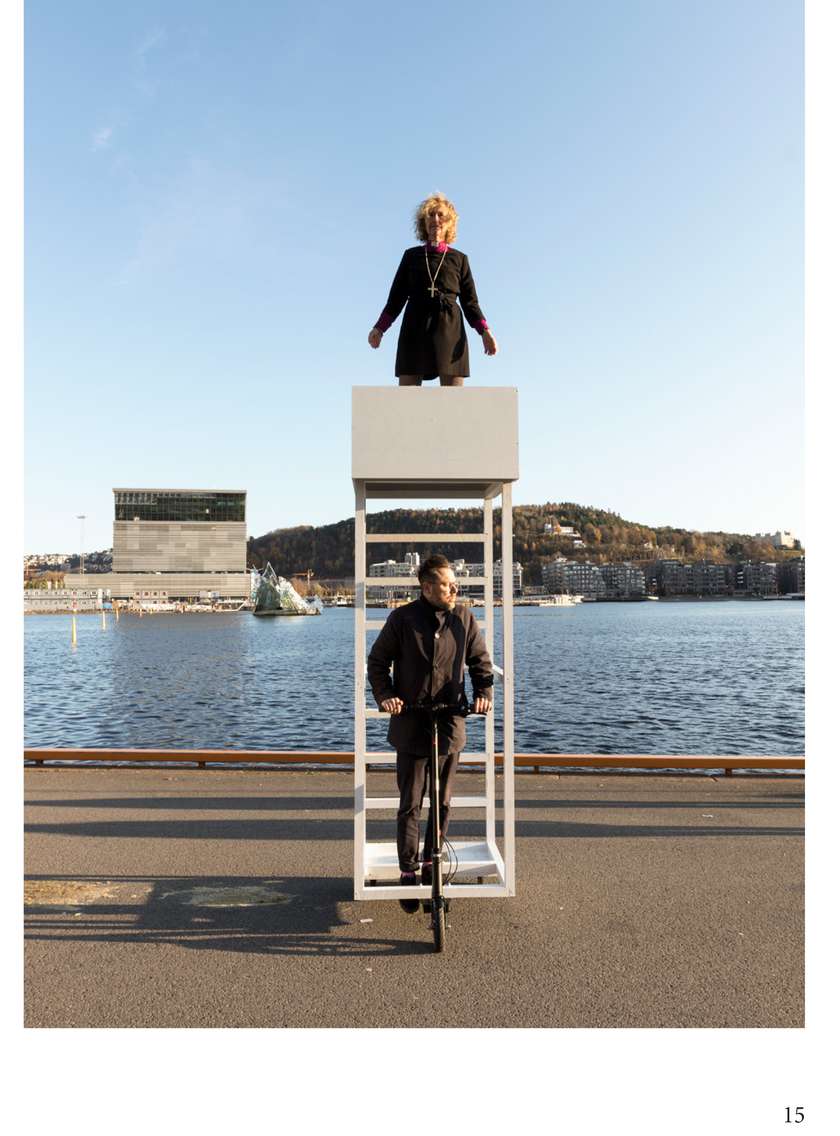
Plug-in Pulpit. Desire Lines_Photo Henrik Haven_Conceived as an artifact designed to attach to a E-scooter in the city of Oslo, the plug-in pulpit becomes a hybrid, multipurpose urban objet.



